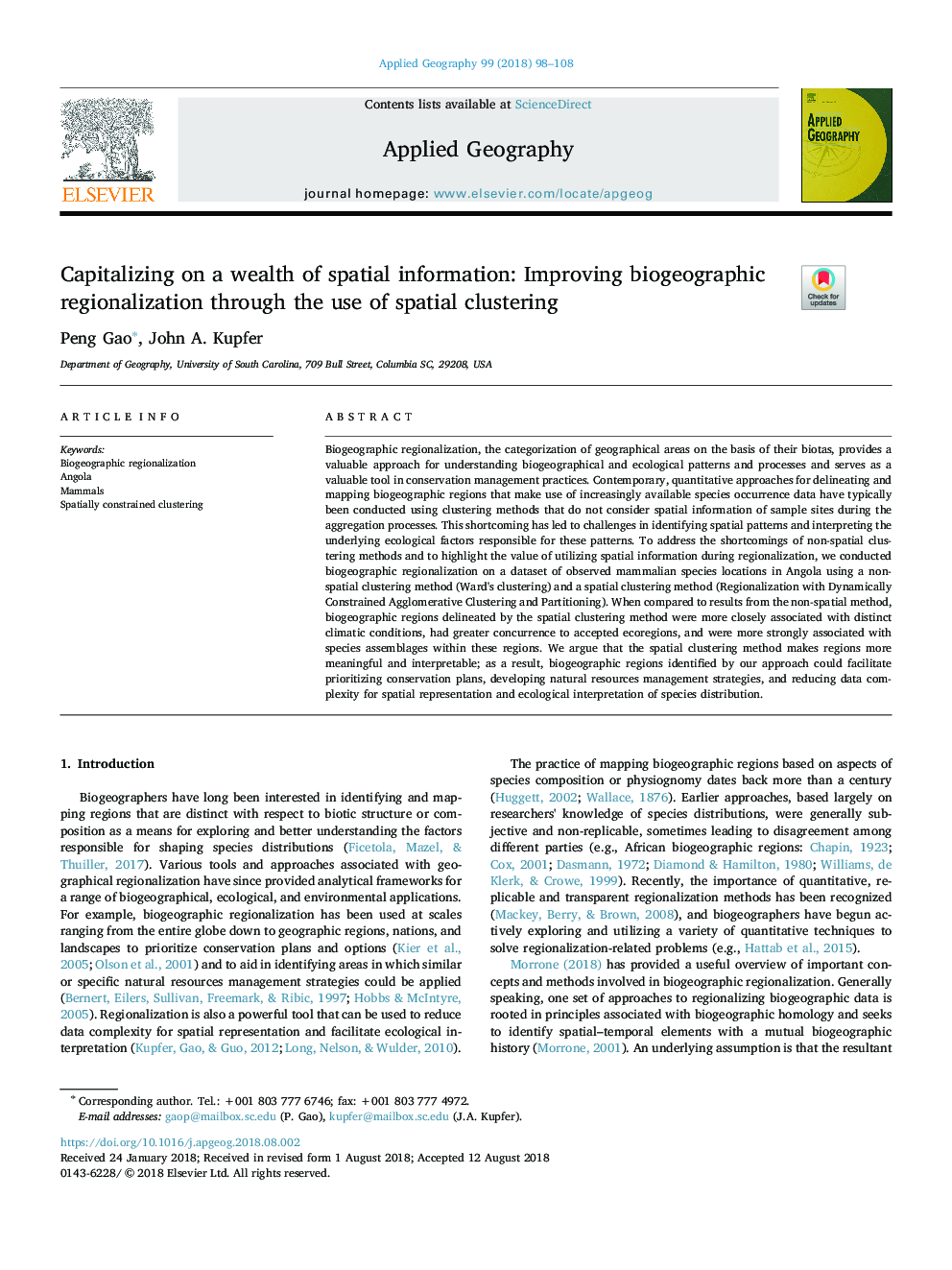| کد مقاله | کد نشریه | سال انتشار | مقاله انگلیسی | نسخه تمام متن |
|---|---|---|---|---|
| 9951692 | 1421018 | 2018 | 11 صفحه PDF | دانلود رایگان |
عنوان انگلیسی مقاله ISI
Capitalizing on a wealth of spatial information: Improving biogeographic regionalization through the use of spatial clustering
ترجمه فارسی عنوان
سرمایه گذاری بر ثروت اطلاعات فضایی: بهبود منطقه بندی زیست شناسانه از طریق استفاده از خوشه بندی فضایی
دانلود مقاله + سفارش ترجمه
دانلود مقاله ISI انگلیسی
رایگان برای ایرانیان
کلمات کلیدی
منطقه بندی بیوگرافی آنگولا، پستانداران، خوشه بندی فضایی محدود،
موضوعات مرتبط
علوم زیستی و بیوفناوری
علوم کشاورزی و بیولوژیک
جنگلداری
چکیده انگلیسی
Biogeographic regionalization, the categorization of geographical areas on the basis of their biotas, provides a valuable approach for understanding biogeographical and ecological patterns and processes and serves as a valuable tool in conservation management practices. Contemporary, quantitative approaches for delineating and mapping biogeographic regions that make use of increasingly available species occurrence data have typically been conducted using clustering methods that do not consider spatial information of sample sites during the aggregation processes. This shortcoming has led to challenges in identifying spatial patterns and interpreting the underlying ecological factors responsible for these patterns. To address the shortcomings of non-spatial clustering methods and to highlight the value of utilizing spatial information during regionalization, we conducted biogeographic regionalization on a dataset of observed mammalian species locations in Angola using a non-spatial clustering method (Ward's clustering) and a spatial clustering method (Regionalization with Dynamically Constrained Agglomerative Clustering and Partitioning). When compared to results from the non-spatial method, biogeographic regions delineated by the spatial clustering method were more closely associated with distinct climatic conditions, had greater concurrence to accepted ecoregions, and were more strongly associated with species assemblages within these regions. We argue that the spatial clustering method makes regions more meaningful and interpretable; as a result, biogeographic regions identified by our approach could facilitate prioritizing conservation plans, developing natural resources management strategies, and reducing data complexity for spatial representation and ecological interpretation of species distribution.
ناشر
Database: Elsevier - ScienceDirect (ساینس دایرکت)
Journal: Applied Geography - Volume 99, October 2018, Pages 98-108
Journal: Applied Geography - Volume 99, October 2018, Pages 98-108
نویسندگان
Peng Gao, John A. Kupfer,
